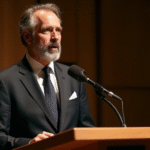Background on the G7 Summit and Key Participants
The 2023 G7 Summit is currently taking place amidst the majestic Canadian mountains, where leaders from the world’s leading industrialized democracies—Germany, Canada, the European Union, France, Italy, Japan, and the United Kingdom—are attempting to find common ground on pressing global issues such as war, economics, and geopolitics. However, the presence of U.S. President Donald Trump, his disregard for established rules, and the mistrust he has sown among allies make significant progress unlikely.
Public Distrust in Trump
According to the Pew Research Center, over 70% of citizens in Germany, France, Canada, and Italy lack trust in Trump. In Mexico, the distrust reaches 91%. This skepticism is well-founded, as Trump has imposed tariffs on all countries, violating the USMCA trade agreement, suggested annexing Canada as the 51st state, and now proposes reinstating Russia and China to the G7.
Claudia Sheinbaum’s Symbolic Presence
Mexico City’s Chief of Government, Claudia Sheinbaum, attends the summit as an invited guest without voting power or decision-making authority. Her role is to advocate for Mexican interests in trade and migration. Symbolically, her presence acknowledges Mexico’s regional relevance. However, without clear support from Canada or Europe, Sheinbaum may only secure a memorandum of understanding or a promise for future dialogue.
European Leaders’ Cautious Stance
European leaders approach the summit cautiously. British politician Keir Starmer, from Ottawa, emphasized Canada’s sovereignty and pledged to push for fair trade and a diplomatic solution to the Middle East conflict, indirectly addressing Trump’s comments about Canada. French President Emmanuel Macron visited Greenland beforehand, sending a message to Trump by stating that “no territory is for sale,” referring to Trump’s proposal to buy the Danish island. German Chancellor Friedrich Merz prioritizes resolving trade disputes with the EU, which have severely affected German industrial exports.
Japan and Italy’s Low Profile
Japan and Italy have chosen to maintain a low profile, focusing on regional cooperation and energy security without directly addressing Trump. Despite the collective discontent, none wish to transform the summit into a diplomatic battleground.
Anticipated Outcomes and Challenges
The summit is likely to conclude with vague statements, official photos, and promises for future consultations. Humanitarian aid announcements for Gaza or Sudan, or calls for peace between Israel and Iran, may emerge. However, substantial and lasting agreements seem improbable. This gathering appears more ceremonial than decisive, aiming to project coordination among leaders who no longer trust each other.
Key Questions and Answers
- What is the purpose of Claudia Sheinbaum’s attendance at the G7 Summit? Sheinbaum attends to advocate for Mexican interests in trade and migration, symbolizing Mexico’s regional relevance.
- Why are European leaders cautious in their approach to the G7 Summit? European leaders are wary due to Trump’s disregard for established rules and the mistrust he has generated among allies.
- What are the anticipated outcomes of the G7 Summit? The summit is expected to produce vague statements, official photos, and promises for future consultations rather than substantial agreements.
- How has public trust in Trump impacted the G7 Summit? Public distrust in Trump, with over 70% of citizens in Germany, France, Canada, and Italy lacking confidence in him, has created a challenging environment for meaningful progress at the summit.






